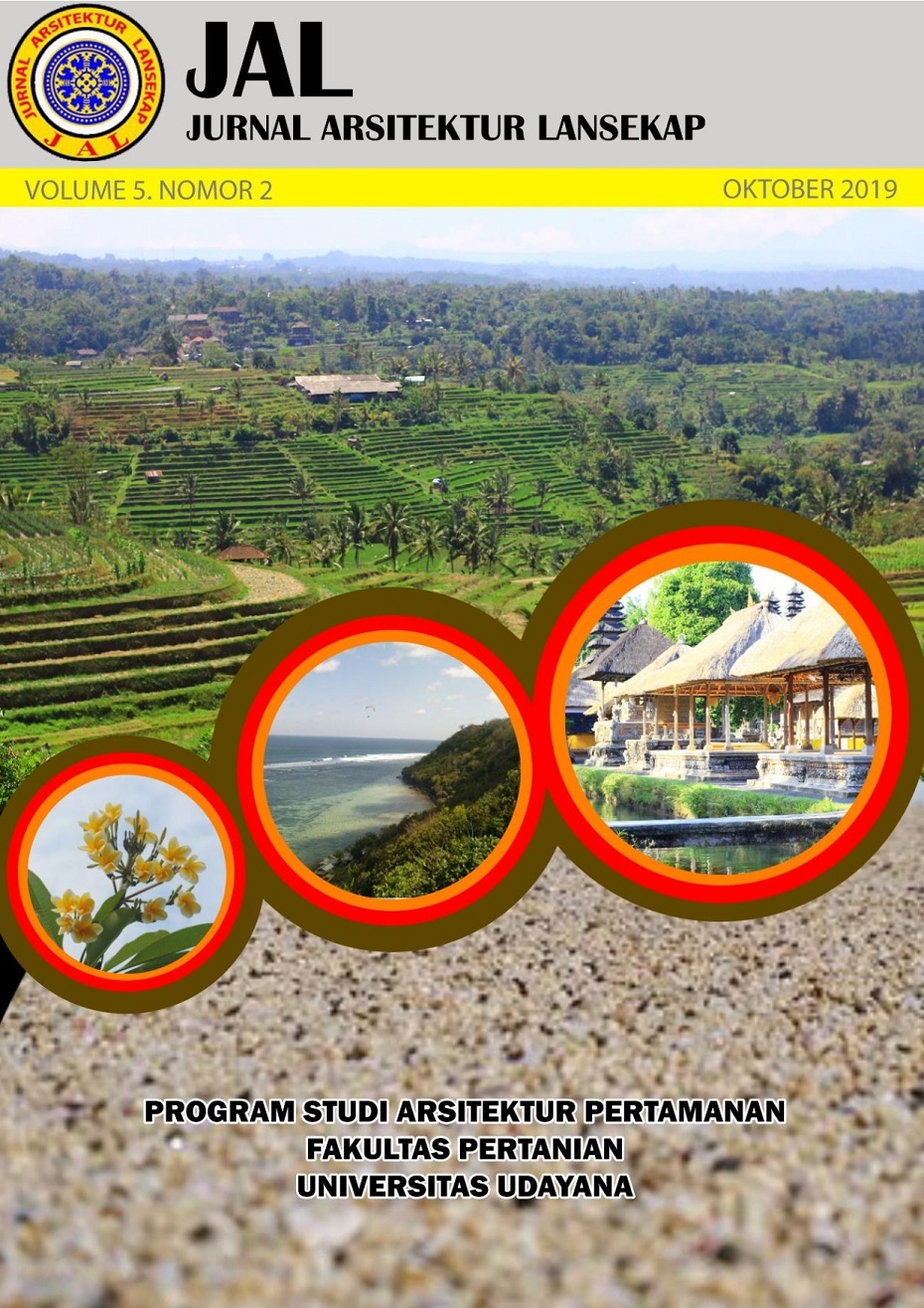Transformasi fungsi catus patha sebagai lanskap sejarah di Kota Denpasar
Abstract
Transformation of catus patha functions as historic landscape in Denpasar city. Denpasar city as the
Capital of the province, is the center of development in Bali. The former Denpasar city began as a Puri
named Puri Denpasar. The location of Puri Denpasar which is the center of government of the Badung
Kingdom is in Catus Patha, where the formation of Denpasar city began. This article examine the changes
and functions of Catus Patha Denpasar which developed during the Badung Kingdom until now when
Denpasar entered the globalization era. The writing method used is only study from various literature sources
related to development of the Catus Patha Denpasar. The results of this study are the application of the catus
patha concept during the kingdom era can be said to be the most disciplined while it compared to the next
periods. In the kingdom era, philosophical values and functions were still original. Entering the colonial era,
the elements of the Catus Patha Denpasar is influence by culture brought from Netherlands. Then entering
the globalization era, the Catus Patha concept is lies in its elements which also influence its function. The
large number of mixed settlements and catur muka statues indicate that the catus patha concept is not well
realized in Denpasar.
Downloads
References
Dharma, I. dan I. Weko (2017). Pengaruh Konsep Catus Patha Terhadap Tata Ruang Pemukiman di Kawasan Transmigrasi Masyarakat Bali. Denpasar, Seminar Nasional Arsitektur dan Tata Ruang (SAMARTA) Bali.
Goodchild, P. (1990). Some Priciples for the Conservation of Historic Landscape. London: ICOMOS (UK) Historic Gardens and Landscape Comittee.
Mahira, E. (2014). Persepsi Masyarakat Tentang Fungsi Kekinian Catuspatha Denpasar. Ruang-Space: Jurnal Lingkungan Binaan. Vol. 1 No. 2, pp. 192-204.
Munandar, A. ( 2011). Catuspatha: Arkeologi Majapahit. 1st ed. Jakarta Selatan: Penerbit Wedatama Widya Sastra.
Nurisjah, S. dan Q. Pramukanto. (2001). Perencanaan Kawasan untuk Pelestarian Lanskap dan Taman Sejarah. Bogor: Institut Pertanian Bogor, Fakultas Pertanian, Jurusan Budidaya Pertanian, Program Studi Arsitektur Lanskap.
Putra, G. (2018). Defining and Sustaining The Place Identity of A Traditional Yet Rapidly Developing City (The Case of Denpasar - Bali, Indonesia, Oxford: PhD Thesis Oxford Brookes University.
Putra, I. (2009). Perubahan Ekspresi Catus Patha dalam Tata Ruang Pusat Pemerintahan di Kota Denpasar. Perspektif Kajian Budaya, Denpasar: Universitas Udayana.
Setiada, N. (2009). Penelusuran Sejarah Kota Denpasar. Denpasar: CV. Cipta.
Simonds, J. (1983). Architecture: A Manual of Site Planning and Design. New York: McGraw-HillBook Company.
Widiastuti (2011). Konservasi Kota Denpasar: Harapan dan Kenyataan. Jurnal Permukiman Natah, Vol. 9 No.1, pp. 10-25.
Yudantini, M. & David, J., 2015. The Catuspatha Pattern in Balinese Palace Architectural. Procedia Environmental Sciences. Volume 28, pp. 538-548.
An author who publishes in the Jurnal Arsitektur Lansekap (JAL) agrees to the following terms:
- Author retains the copyright and grants the journal the right of first publication of the work simultaneously licensed under the Creative Commons Attribution-ShareAlike 4.0 License that allows others to share the work with an acknowledgement of the work's authorship and initial publication in this journal
- Author is able to enter into separate, additional contractual arrangements for the non-exclusive distribution of the journal's published version of the work (e.g., post it to an institutional repository or publish it in a book) with the acknowledgement of its initial publication in this journal.
- Author is permitted and encouraged to post his/her work online (e.g., in institutional repositories or on their website) prior to and during the submission process, as it can lead to productive exchanges, as well as earlier and greater citation of the published work (See The Effect of Open Access).
Read more about the Creative Commons Attribution-ShareAlike 4.0 Licence here: https://creativecommons.org/licenses/by-sa/4.0/.







